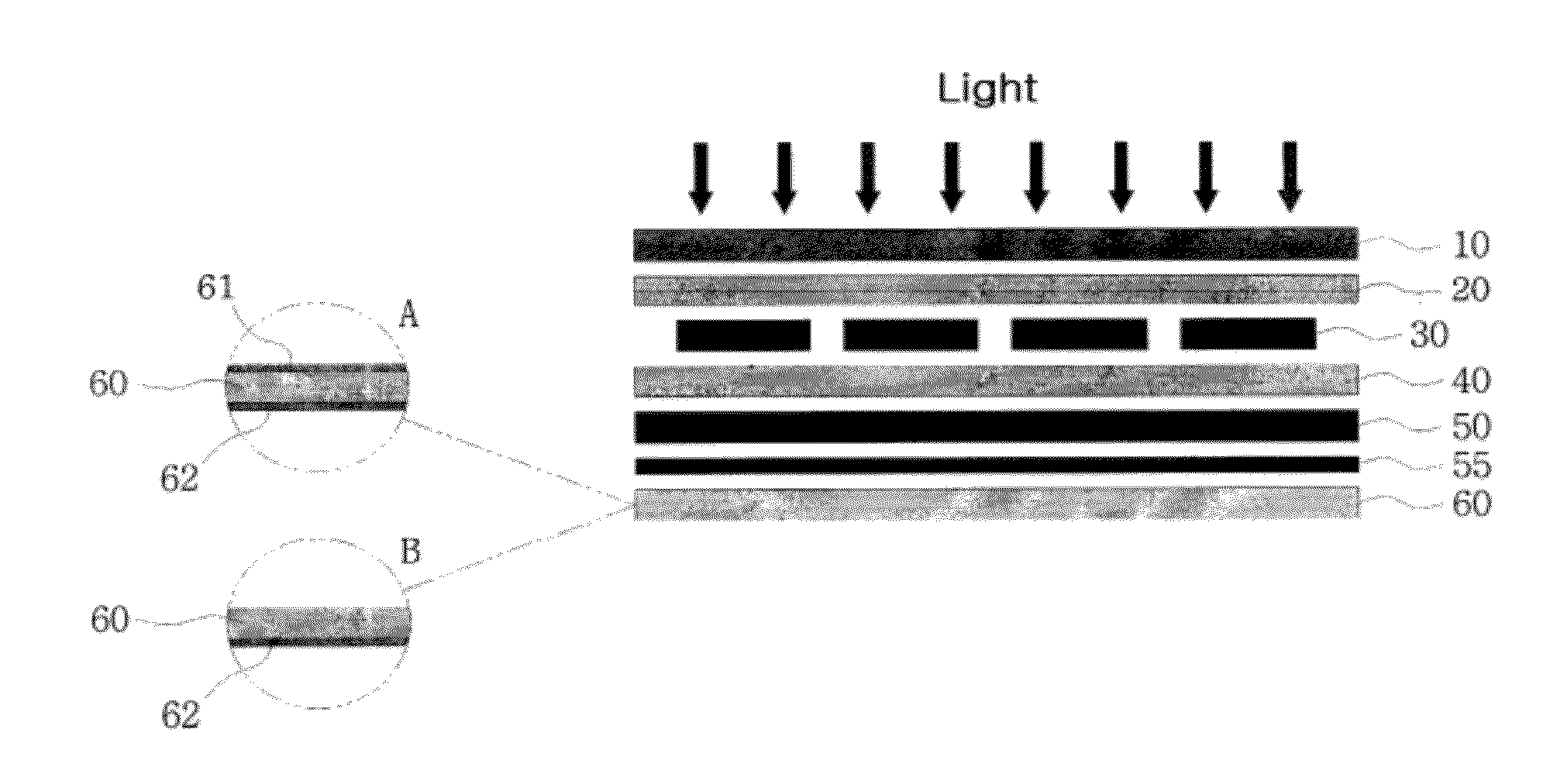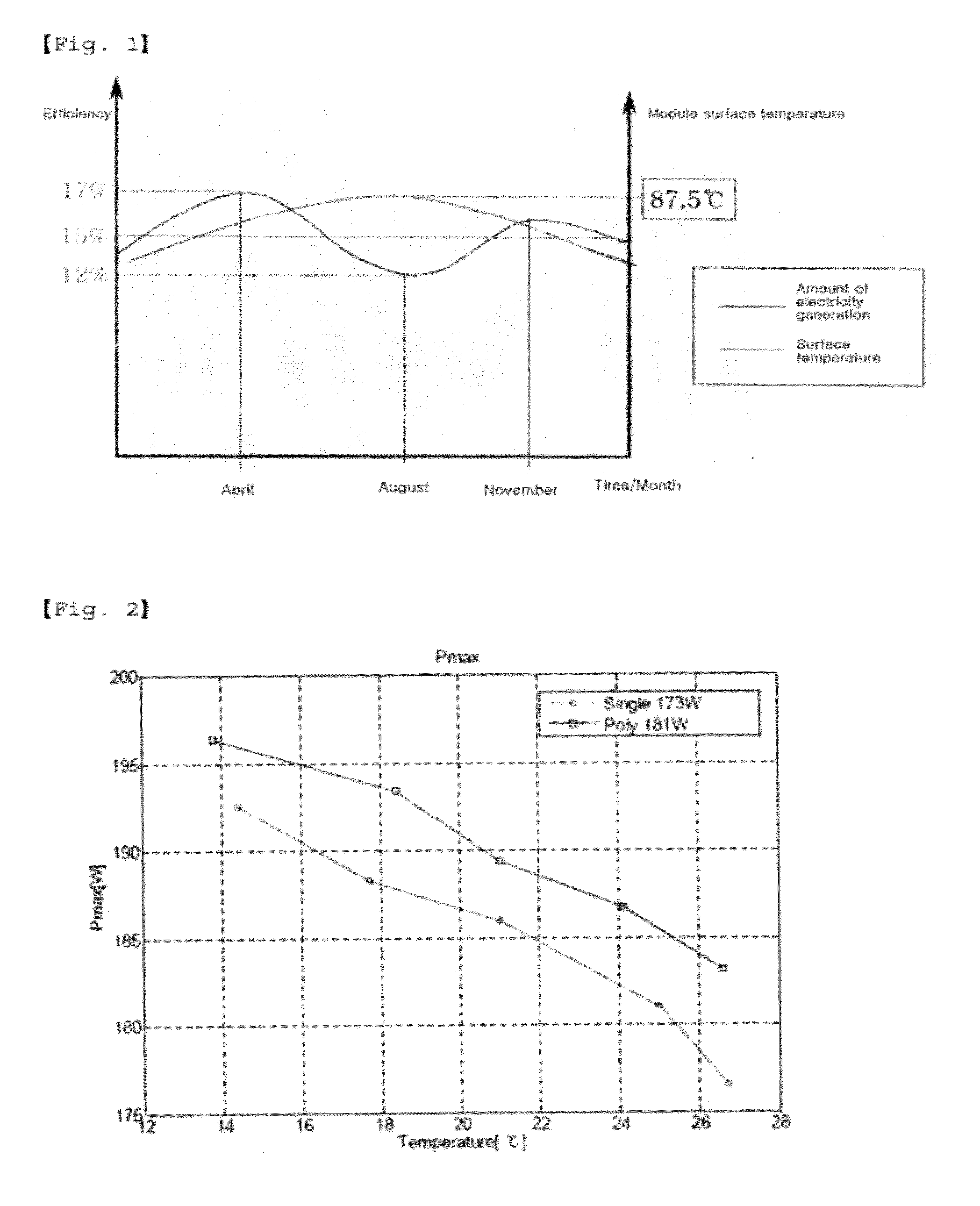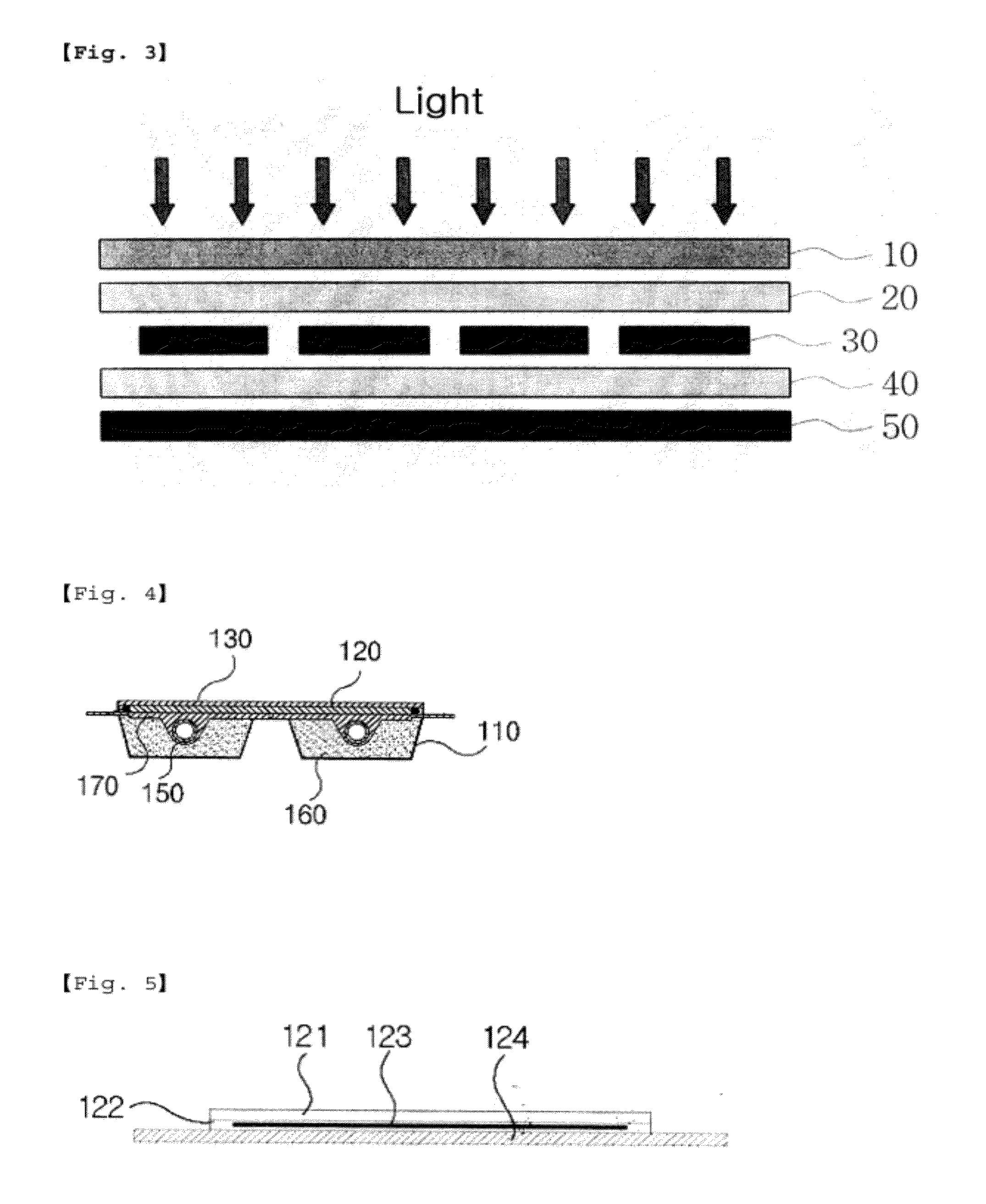Photovoltaic module with ceramic coating heat radiating sheet
- Summary
- Abstract
- Description
- Claims
- Application Information
AI Technical Summary
Benefits of technology
Problems solved by technology
Method used
Image
Examples
example 1
Manufacture of Attachable Type Module
[0072]An attachable type module was manufactured in which the glass substrate 10, the front side solar EVA film 20, the solar cells 30, the back side solar EVA film 40, the back sheet 50, the pressure sensitive adhesive pressure-sensitive adhesive double-coated tape tape 55, and the heat-dissipating sheet 60 having the ceramic coating layer formed thereon are sequentially laminated in this order.
[0073]In addition, in the module according to Example 1, the thicknesses of the glass substrate 10, the front side solar EVA film 20, the solar cells 30, the back side solar EVA film 40, the back sheet 50, and the heat-dissipating sheet 60 were 2±0.1 mm, 1.5±0.1 mm, 0.2±0.05 mm, 1.5±0.1 mm, 0.3±0.1 mm, and 0.3±0.1 mm, respectively.
[0074]Besides, the heat-dissipating sheet used in the Example 1 is formed as an aluminum thin film, the material of the back sheet is fluorocarbon resin, the thicknesses of the ceramic coating layer formed on both sides of the h...
example 2
Manufacture of Replaceable Sheet Type Module
[0076]A replaceable sheet type module was manufactured in which the glass substrate 10, the front side solar EVA film 20, the solar cells 30, the back side solar EVA film 40, and the heat-dissipating sheet 60 having the ceramic coating layer formed thereon are sequentially laminated in this order.
[0077]Also, in the module according to the Example 2, the same conditions as those in the Example 1 were applied to the thicknesses of the glass substrate 10, the front side solar EVA film 20, the solar cell 30, the back side solar EVA film 40, and the heat-dissipating sheet 60.
[0078]In addition, the material of the heat-dissipating sheet and the back sheet used in Example 2 was the same as that in Example 1, and the same conditions as those in Example 1 were applied to the thicknesses and the kind of the ceramic coating layer formed on both sides of the heat-dissipating sheet.
PUM
 Login to View More
Login to View More Abstract
Description
Claims
Application Information
 Login to View More
Login to View More - R&D
- Intellectual Property
- Life Sciences
- Materials
- Tech Scout
- Unparalleled Data Quality
- Higher Quality Content
- 60% Fewer Hallucinations
Browse by: Latest US Patents, China's latest patents, Technical Efficacy Thesaurus, Application Domain, Technology Topic, Popular Technical Reports.
© 2025 PatSnap. All rights reserved.Legal|Privacy policy|Modern Slavery Act Transparency Statement|Sitemap|About US| Contact US: help@patsnap.com



